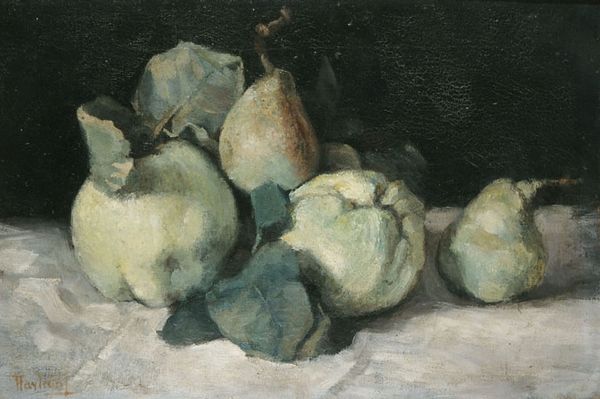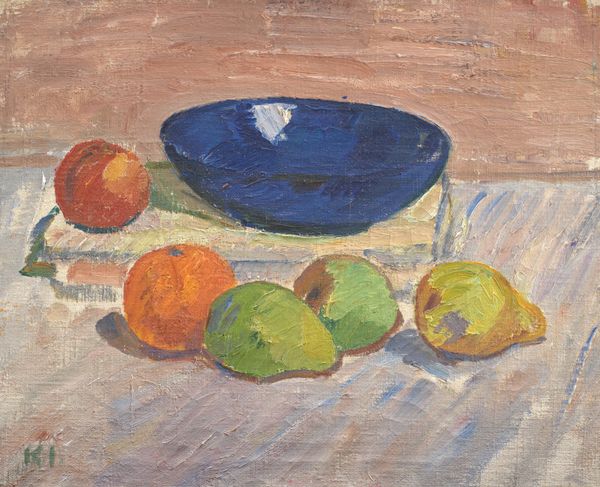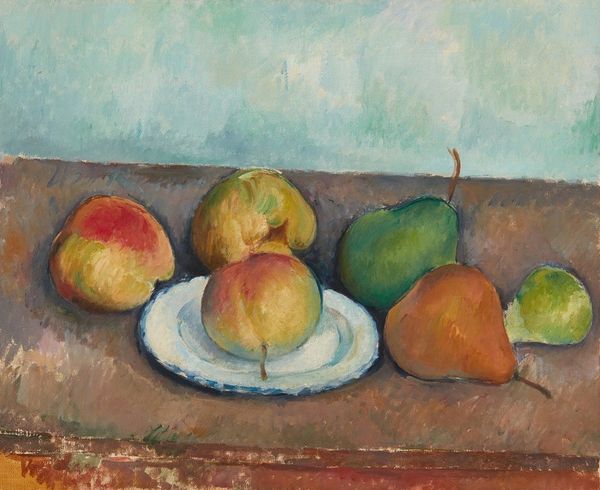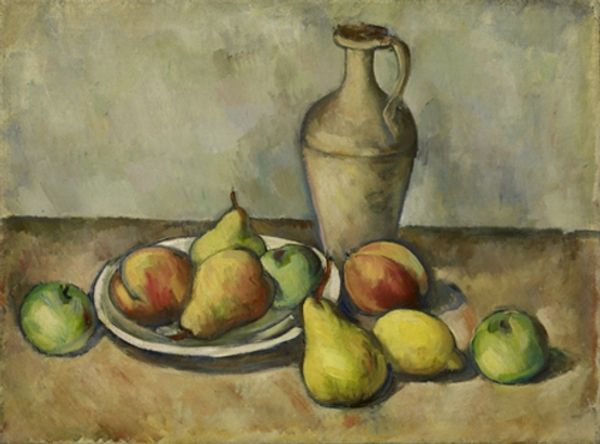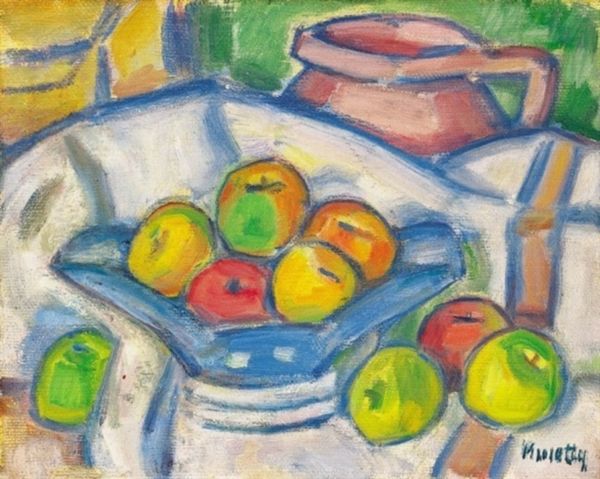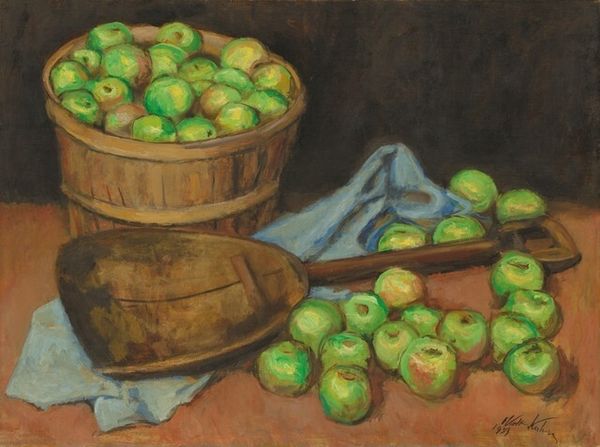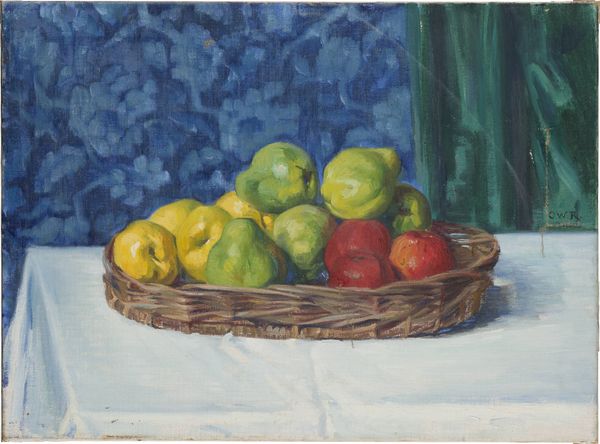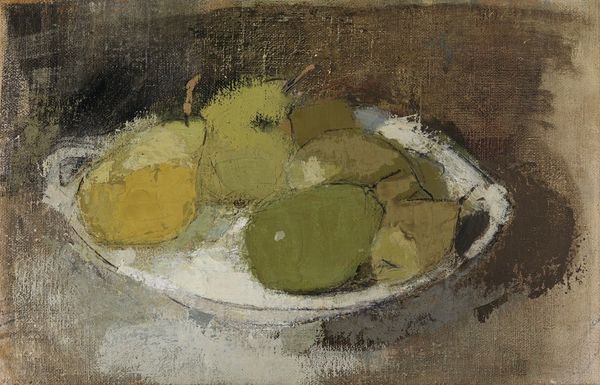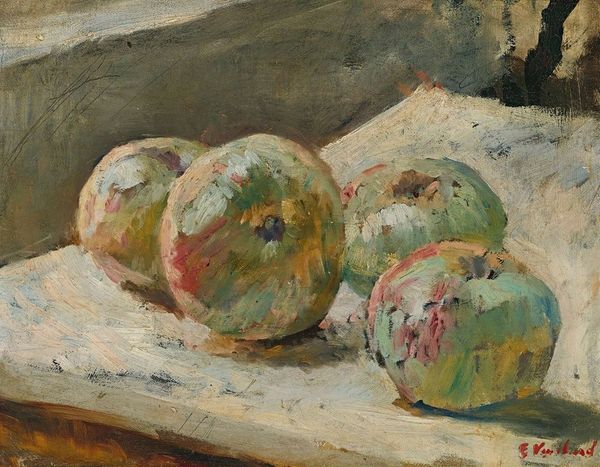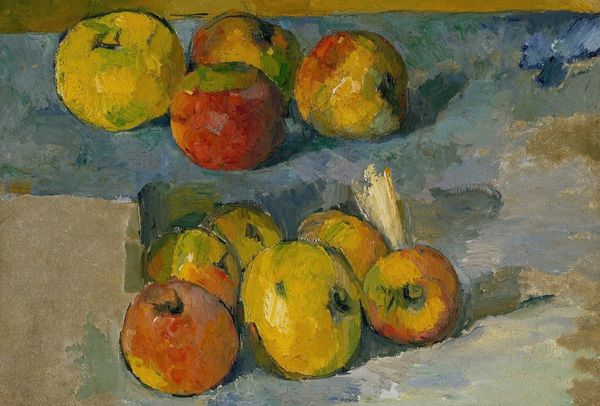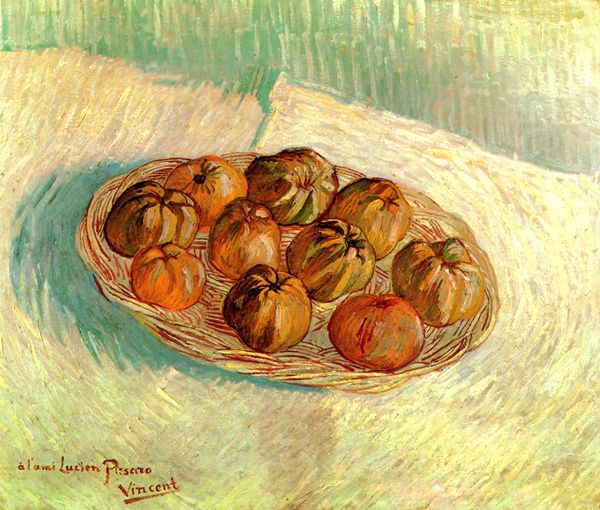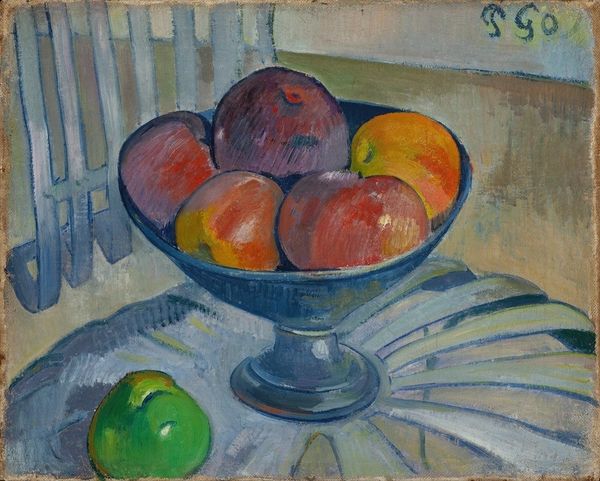
Copyright: Public domain
Editor: Patrick Henry Bruce's "Plums," painted in 1912 using oil, presents a deceptively simple scene. The application of the paint appears quite thick and creates noticeable texture on the canvas. How does the artist's specific treatment of form and color impact the overall composition here? Curator: Notice the deliberate arrangement. Bruce reduces the plums and drapery to fundamental shapes. He doesn't aim to perfectly replicate observed reality. Consider how the limited palette—predominantly variations of green, yellow and muted browns and lavenders—serves to flatten the picture plane, denying deep recession into space. Are the plums grounded in reality, or floating in an arrangement? Editor: It’s almost as if he is playing with shapes and colors. Does the simplification enhance the aesthetic value of the work, or does it detract from it? Curator: Formally, the brushstrokes are not blended smoothly. Bruce constructs each plane with discrete touches of pigment. Consider the way he builds highlights and shadows using visible strokes, emphasizing the materiality of the oil paint itself. Does that method encourage or hinder interpretation of space and distance? Editor: It’s fascinating how much analysis can be derived from just looking at shape, texture and color, without focusing on symbolism or the artist's life. Curator: Precisely. Formalism redirects us to attend closely to the object, the thingness of the art. The reward is understanding a completely non-referential approach. Editor: I am looking at the work through fresh eyes now! I was focused on subject, but can see how it really emphasizes line, shape and color over the creation of illusionistic space.
Comments
No comments
Be the first to comment and join the conversation on the ultimate creative platform.
